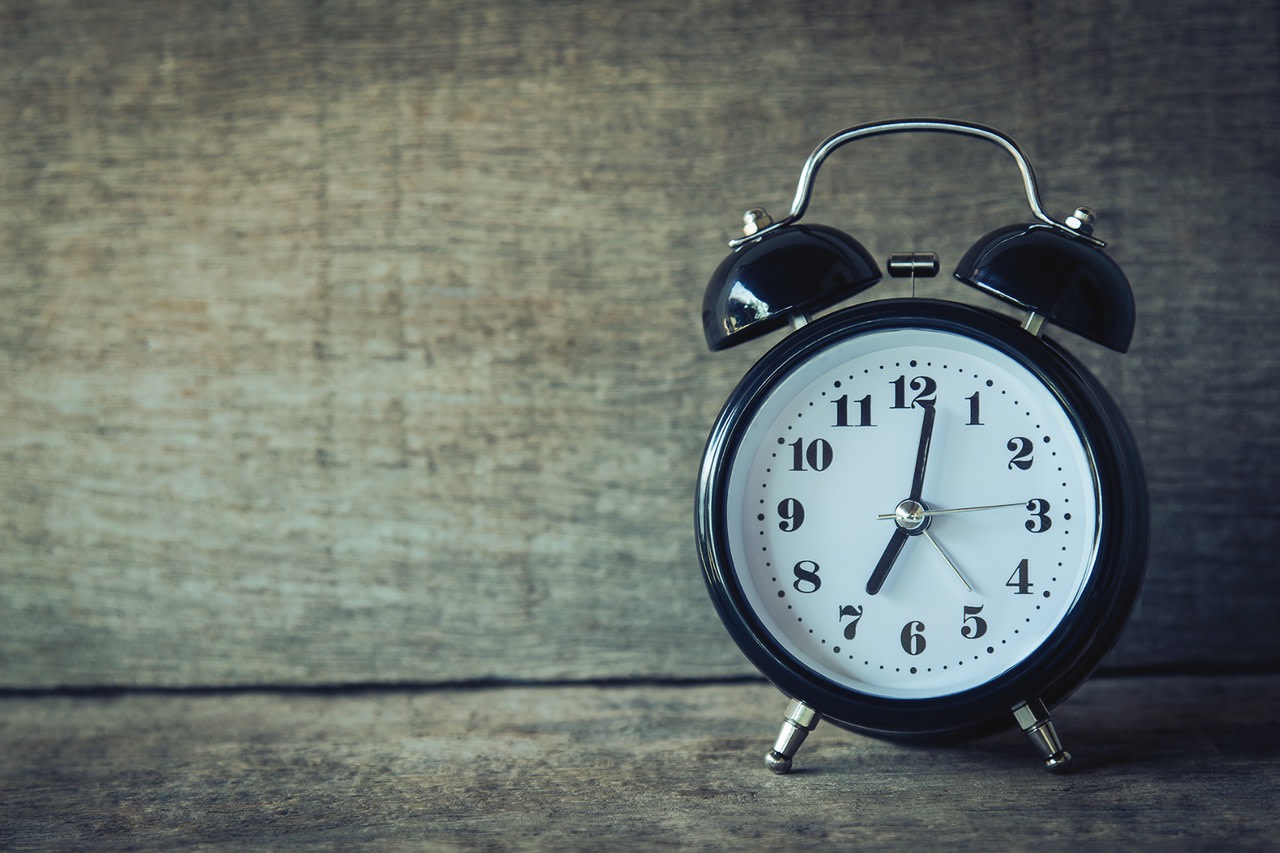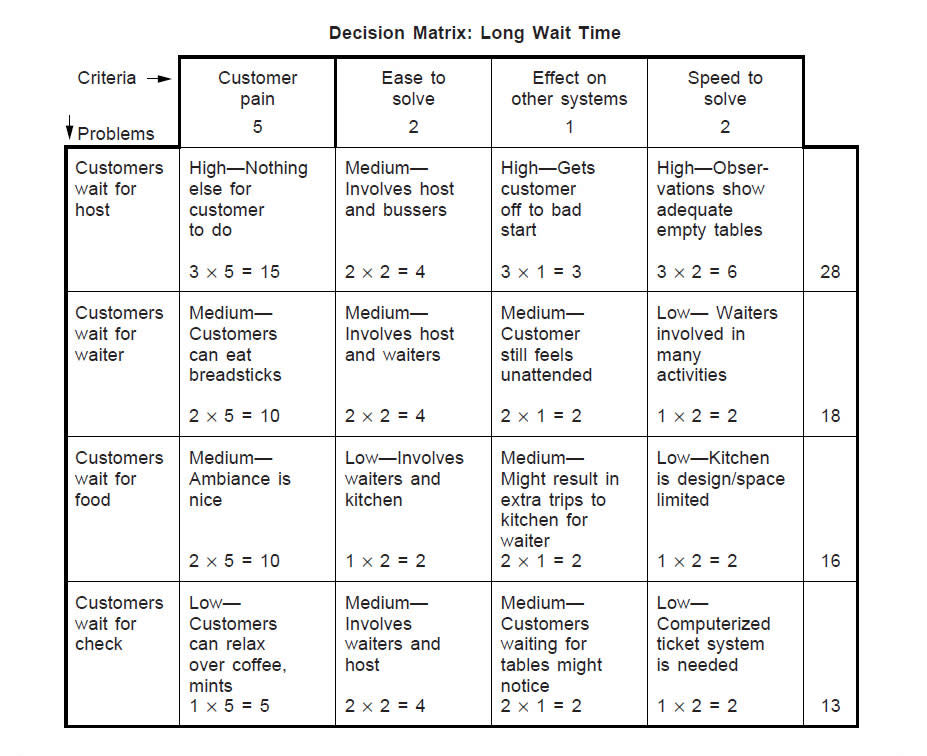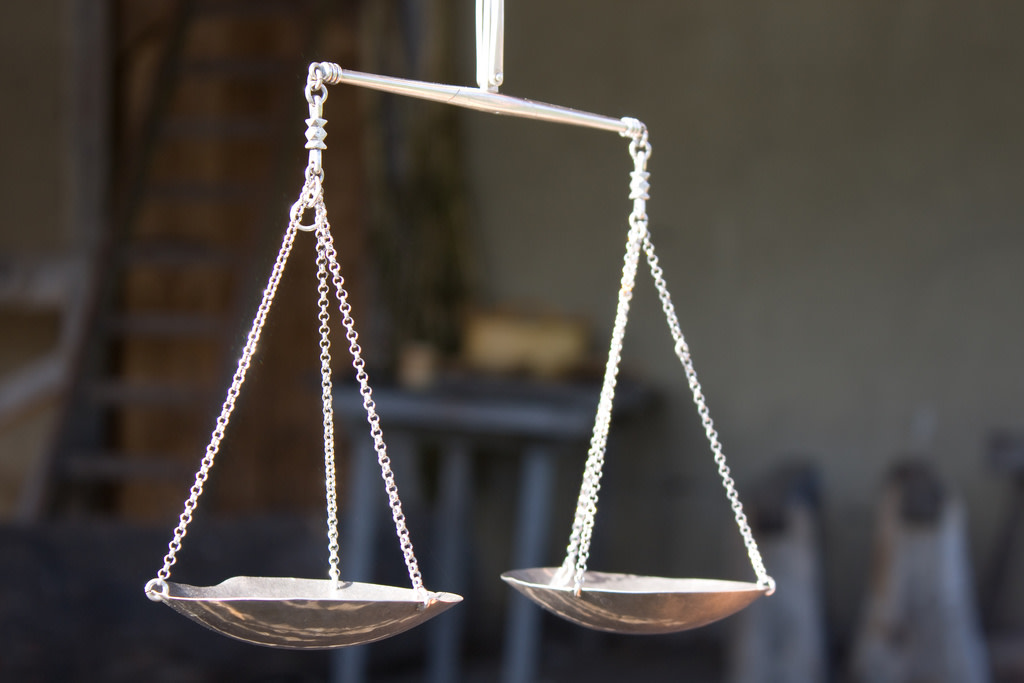From ordering coffee and choosing a suit to evaluating job offers and pursuing business opportunities, we’re assaulted with decisions nearly every second of the day. If you’ve ever wasted hours overanalyzing Amazon reviews—let alone overthinking a business decision—you know that researching options and assessing alternatives carries a considerable time and mental cost. But even the act of making a decision depletes our mental energy and self-control, to say nothing of the buyer’s remorse it may bring later on.
Our limited time is far better spent doing things, rather than thinking about doing things. If the classic pro-con list isn’t cutting it, try these 7 science-based ways to make a decision the next time you're tempted to just flip a coin.
Make Decisions in the Morning

After starting your gluten-, soy-, sugar-, and everything else-free diet for three weeks, you’re suddenly splurging on expensive shoes or giving up on typically easily tasks at work. Anyone who’s undertaken from a restrictive diet can relate to decision fatigue. The energy we devote to any choice—from diets to work decisions—comes from a central source in the brain. Every decision we make saps cognitive resources from other tasks that require mental concentration.
Research shows that the act of decision making, by itself, exhausts our subsequent self-control. In a study published in the Journal of Personality and Social Psychology, one group of students was instructed to weigh the advantages and disadvantages of specific features of a Dell computer—but did not decide whether to purchase it. Participants in another group were simply told to decide whether or not to buy the computer, and to figure out on their own which factors to consider in their purchasing decision.
Both groups were then told to solve a series of brainteasers until they solved them all or wanted to stop. Compared to the students who had only considered decision factors, those who had actually made the decision gave up on the problems much more quickly, suggesting that the sole act of making a decision—even if, like in a laboratory condition, the outcome carries no impact on our lives—diminishes our self-control.
Your own daily choices—which suit to wear, whether a shortcut will help sidestep traffic, the wording on your expense report—may seem inconsequential. But cumulatively, they deplete our cognitive resources and prompt us to choose immediate gratification over long-term, higher-value rewards.
So don’t save strategic, course-altering choices until the end of the day. Instead, wait until you’ve slept and you’ve restored your mental energy. Then, you’ll approach your most consequential decisions with all the your cognitive resources that they deserve.
Use a Decision Matrix

In business as in life, choices are rarely black and white, and we rarely consider only one dimension of a situation. For that reason, pro/con lists can’t capture the complexity of our decision making processes.
In those cases, use a decision matrix—essentially a box that lists decision criteria on one side and your options on the other—to more easily visualize the possible outcomes of your decision. With every possible result listed side by side, assign point values to them. This forces you to precisely prioritize what matters most and what worst-case scenarios you absolutely must avoid.
For example, consider a new graduate evaluating multiple job offers. Under criteria, the graduate would list everything they wants from their future job—intellectual stimulation, a welcoming company culture, opportunities for advancement, and work-life balance. Then, they'd determine which factors are most important by assigning point values to each one. If they're willing to sacrifice nights and weekends for a quick promotion, say, they'd rate the opportunity metric more highly than work-life balance.
On the other side, they'd list each offer and consider the degree to which they provide their "must-have" qualities from a job listed and again assign point values to each. If Silicon Valley Startup offers a clearer path to the C-suite than Big Corporation, Inc., the graduate might rate Startup’s opportunities for advancement as a 9 and Big Corporation’s opportunities as a 5.
Finally, they would multiply the numbers in each column by the numbers in each row. If they value opportunities for advancement as a "9," and rated Silicon Valley startup’s opportunities as a "9," Silicon Valley startup would score an 81 in that category.
From there, the decision becomes clear. The company with the most points "wins."
Obviously, we can’t multiply and divide our way into major life-changing decisions. But especially if you’re picking between multiple good options, or you’re struggling to clarify your priorities, this exercise can help you determine what matters most.
Solicit Feedback With Caution

After spending a few years in a safe—but boring—position, you’re pondering a risky but ultimately more rewarding opportunity. In the interest of being well-informed, you seek out other perspectives from your significant other, your parents, your mentor. But instead of clarifying your decision, the chorus of voices complicates things further. They harp on all of the risks involved and gradually, you start to question yourself. You turn down the exotic opportunity and the "what ifs" linger in your mind.
Crowdsourcing prevents us from becoming limited by our own perspectives, but when all of the voices are the same, we feel pressured to conform to their opinion. We follow the herd, sometimes at the expense of our own happiness. This peer pressure—also called the herding effect—influences our investing decisions, as researchers at the University of Cambridge found.
Participants in the study were given the option to buy a stock. After receiving information about its past performance, they were either told that a group of four people had bought it, or that they had turned it down. Those who heard "buy" stories purchased the stock almost 80 percent of the time, whereas those in the "reject" group only bought it 25 percent of the time. That suggests that even when we possess information, social norms can significantly impact our choices.
However, the impact of social norms varies widely based on personality and situation, as sensitivity to punishment and reward made people more likely to default to the group’s decision. Empathetic, adventurous, and impulsive people were also more likely to be influenced by the herd effect, but social information actually made extroverted and confident people less likely to follow the crowd.
So when you’re soliciting opinions on social media, take stock of your personality. If you’re especially attuned to avoiding punishment, earning external rewards, or pleasing others, be aware that the outside opinion could sway your decision and proceed accordingly. But regardless of your personal traits, consult a diverse range of outsiders and heavily research all of your options before getting feedback so you can back up your claims with conviction.
Beware of Cognitive Biases
Since we’re not robots, we often base our decisions at least partly on emotion, instead of letting pros and cons dictate our every move.
But often, we unknowingly use irrational lines of thinking—also known as heuristics—to justify our decisions, which prevents us from investigating our options as fully. These mental shortcuts not only short circuit our objective thinking, but give us false confidence in our bad choices, as Daniel Kahneman writes in his book Thinking Fast and Slow.
"We are often confident even when we are wrong, and an objective observer is more likely to detect our errors than we are," says Kahneman.
By learning about these cognitive biases, and noticing when they interfere in your own decision making process, you’ll reduce your odds of making a choice that you regret later on.
Pro-Innovation Bias
The belief that an innovation should be adopted by the whole society
Nothing illustrates the seductive pull of technology quite like the rise and fall of Theranos, the blood-testing company that was revealed to be a hoax. After its supposedly life-saving technology was debunked by researchers, questions then turned to its investors. How could intelligent investors overlook all the red flags and pour into $40 million into a sham company?
Simply put, nobody (not even Warren Buffett), wants to miss the next billion-dollar idea. We want to feel as if we’re helping advance society—and want to make a buck. When success is tied so heavily to technological advancement, second-guessing on such an innovative project feels somehow backwards. But if the allure of "progress" prevents us from critically analyzing the usefulness and limitations of a project, we fall prey to the pro-innovation bias. Even if it doesn’t cost you $40 million, the bad investment could waste your money, resources, and pride.
The pro-innovation bias alone shouldn’t prevent you from investing in a product or idea you believe in. But apply the same skepticism to these sexy projects that you would to any other purchasing decision.
Clustering Illusion
The cognitive bias of seeing a pattern in what is actually a random sequence of numbers or events.
Three of your colleagues have received raises this month, so you decide to ask your manager what you’re worth...and you strike out.
The clustering illusion refers to our tendency to see patterns in randomly occurring events, and then base our decisions on that pattern. When we see everyone else on our team scoring raises, we assume that our bosses are feeling generous, instead of considering other explanations for that series of events (say, all of three employees, independently of one another, aced their last project while you very much haven’t).
The problem with clustering is that we can rarely possess enough information about a series of event to prove that is more than a string of chance. When we’re desperate for a "sign from the universe" that seems to support our desire to do something, we assign a pattern to the events related to it, follow that pattern, and—sometimes—make an ill-informed decision based on intuition.
Don’t completely discount the patterns you perceive in your environment. Just be sure that you ask around to determine whether the pattern exists, or whether you’re using it to confirm something that you wish to be true.
Trust Your Heart if Your Head Knows What to do
How expert someone is within a particular domain has a positive impact on their ability to make an accurate gut decision
Erik Dane
Your heavily researched pro-con list points to Option A...but your gut is gravitating to Option B. Cue hours of indecision.
The case of "head versus heart" places us in a no-win situation. Choose "head" and your intuition will continue to nag at you. But if your emotions in the moment are based on incomplete information (or you’re just annoyed at your boss), future information could prove your decision "wrong" later on.
A study from researchers at Rice University, George Mason University and Boston College supports this, showing that you should only trust your gut if you’re an expert on the topic at hand.
Researchers conducted a study where participants judged whether designer bags where real or fake. After students were tested on their knowledge of fashion, they were assigned either to an "intuitive" or "analytical" group.
Those in the "intuitive" group were given five seconds to decide whether or not the bag was a knockoff, while those in the "analytical" group were given two minutes to list the features that might distinguish a real bag from a fake (i.e., stitching, design, etc.) before making their decision.
For people with high background knowledge of designer bags, intuition was more effective than analysis. But for those lacking expertise, the two-minute analysis period resulted in better decisions.
"How expert someone is within a particular domain has a positive impact on their ability to make an accurate gut decision," said Rice’s Erik Dane, Ph.D., lead author of the study.
So it’s OK to listen to the butterflies in your stomach—as long as you’re also capable of making the decision with your mind.
Interview Your Future Self
You can't connect the dots looking forward. You can only connect them looking backwards.
Steve Jobs
In his 2005 commencement address at Stanford, Steve Jobs encouraged graduates not to mold themselves and their skillsets to fit the demands of a job posting, but to pursue opportunities that already aligned with their values.
"You can't connect the dots looking forward," Jobs said. "You can only connect them looking backwards. So you have to trust that the dots will somehow connect in your future. You have to trust in something—your gut, destiny, life, karma, whatever."
But if we lack much life experience—and thus have less dots to connect—it’s hard for us to engage in this kind of retrospective decision making. Instead, give your future self in an interview. If you ask yourself the right questions, you’ll be able to visualize concrete situations that will result from your choice, and more generally, how your decision will impact your daily life.
For example, if you’re mulling over whether or not to accept a promotion, ask your future self a few basic questions about the realistic, day-to-day responsibilities of your new role.
Ask realistic questions—you’ll see past the prestige of the elevated position and think of the potential downsides. "What time do you get into the office? How many direct reports do you have and how much of your time do you spend managing them? What are the most annoying parts of your job?"
Then move to the big picture to determine whether this role will be intellectually stimulating and rewarding enough for you, and whether it meshes with your personality and professional goals. Some sample questions for Future You include: "When I leave work each day, what am I most proud of? What are my goals for this position/my department/etc.? What have I learned from this opportunity and how has it prepared me for future roles?"
Most valuable of all, you can worry about worst-case scenarios, talk yourself through the associated risks and rewards, and decide whether or not they’re worth the trouble. An example: "50 percent of your compensation is based on performance, the market turned, and you had a terrible earnings year. How do you feel? How has this impacted your financial health? Has your company helped you find ways to improve?"
Sure, if you knew the answers to all of these questions, you’d probably have already made your decision. But your points of uncertainty—say, your performance review process—will remind you to solicit more information. And as you go through the interview, your tone will speak volumes about your instinctive reaction to the job. If you find yourself reacting negatively to most of the answers and forcing enthusiasm, you can investigate the source of your reluctance and potentially save yourself from a bad decision.
Put Options on a Par

Two great options should alleviate the pressure surrounding a decision. Either way, you can’t lose, right?
But when you’re committed to two good choices, this "no-lose" situation is more burden than blessing. No matter which you pick, you’re still giving up something good, virtually guaranteeing that you’ll suffer some "buyer’s resources".
Of course, the optimist’s flip side is that every possible decision will likely result in a satisfying outcome. Sticking to this positive interpretation eases our decision making, says Ruth Chang, a professor of philosophy at Rutgers University. In her TED Talk, Chang encourages people to "put their choices on a par," meaning that in the presence of good options, we should weigh each outcome equally and focus on what we'll gain instead of what we could lose.
"So when we face hard choices, we shouldn't beat our head against a wall trying to figure out which alternative is better. There is no best alternative. Instead of looking for reasons out there, we should be looking for reasons in here: Who am I to be? You might decide to be a pink sock-wearing, cereal-loving, country-living banker, and I might decide to be a black sock-wearing, urban, donut-loving artist. What we do in hard choices is very much up to each of us."
Besides reducing pressure, this approach also remind us that although we’ve been presented with two promising opportunities, we can’t actually have our cake and eat it too.
Part of being rational is doing the better thing rather than the worse thing.
Ruth Chang
When you’re writing and rewriting your reasons "for" and "against," obsessing over every possible outcomes and feeling paralyzed by indecision, it’s easy to forget that these difficult choices are what provide us the opportunity and autonomy we crave in our lives. If each choice had a clear, "logical" answer, we’d feel compelled to choose that alternative at the expense of risk, creativity, and passion. In her TED Talk, Chang agreed.
"Imagine a world in which every choice you face is an easy choice," Chang said. "That is, there's always a best alternative. If there's a best alternative, then that's the one you should choose, because part of being rational is doing the better thing rather than the worse thing, choosing what you have most reason to choose. In such a world, we'd have most reason to wear black socks instead of pink socks, to eat cereal instead of donuts."
So when you’re implementing these tips and making choices, take a second to embrace the uncertainty, too. That's the spark of life.
Read more: 7 mental models to help you make better business decisions
Header photo from Startup Stock Photos via Pexels; clock photo by Aphiwat Chuangchoem via Pexels; feedback photo by Tim Gouw via Pexels; Balance photo by Hans Splinter via Flickr.





